SI Vault: The irrational exuberance of NHL trade deadline day

This column originally appeared in Sports Illustrated on March 3, 2009.
The patron saint of the NHL trading deadline is a smallish former player with thinning hair who was renowned for staying out of the penalty box, a dubious fashion sense, and a helmet so battered it looked like troops had spooned soup from it at the Battle of the Somme.
He is, of course, Butch Goring. If he hadn't been such a resounding success in New York after he was obtained from the Los Angeles Kings on March 10, 1980, a day prior to what was then the little-remarked-upon deadline (the second-line center won the Conn Smythe Trophy in 1981 and was an important component in the dynastic Islanders' four Stanley Cups), the NHL's annual late winter day of frenzy and frolic, practically a national holiday in Canada, would likely still pass quietly.
2015 NHL Trade Deadline: blogging the day's action
But nearly three decades ago, Islanders general manager Bill Torrey demonstrated that a judicious trade (for Dave Lewis and Billy Harris) could change the course of a franchise. So, Happy Goring Day! In the next 48 hours, you are likely to hear Goring's name almost as often as Florida defenseman Jay Bouwmeester's or Phoenix center Olli Jokinen's.
There is another reason why Goring is a touchstone: he is practically sui generis. Despite the flurry of activity expected prior to the 3 p.m. EST deadline on Wednesday, March 4—we should be good for our typical post-owner's lockout 25 or so deals despite earlier fears that the swap markets had dried up—trades with an impact like Goring's will once again prove exceedingly rare.
As Toronto GM Brian Burke is fond of pointing out (and obligingly did so on a conference call last week), GMs make more mistakes on this day than the rest of the year combined. For every good trade at the deadline, he posits, there are five or six poor ones. Burke's Law, while hardly scientific, sounds about right.
The NHL trade deadline is, of course, an intriguing exercise in two disciplines: economics and psychology. The economics, especially in the salary cap world, seem to be straight forward enough. Everything has to fit under the $56.7 million umbrella. If, say, the Boston Bruins want Anaheim's Chris Pronger—and they should—they are going to need some clever reshuffling in order to make the dollars work.
But the dismal science in hockey grows ever more dismal with the state of the world. The coin of the realm is now draft picks or prospects, the rock upon which teams always should build but never more so than now in a shrinking universe. Even the rental player—one whose contract is expiring—is more valuable than ever.
2015 NHL Trade Deadline: How we got here, who went where
Like Warren Beatty pre-Annette Bening, there are distinct advantages to having no long-term obligations. With the salary cap poised to beat a serious retreat for 2010-11, there are few GMs interested in marrying a player who might get him one more playoff round, even though there would be short-term economic advantages in terms of season tickets and corporate sponsorships. In cases where there already is a longer contract commitment in place, teams will have to trade money for money, as Anaheim and Pittsburgh did in the recent deal that sent defenseman Ryan Whitney west for forward Chris Kunitz.
But there are capologists and VPs of finance/marketing to fret that stuff. For me, the psychology of the day, the groupthink that seizes general managers, is a richer vein to mine. Abetted by a three o'clock last call—a deadline can turn anybody into a binger—NHL GMs start to resemble the women who burst into Filene's Basement on the day the store offers its annual wedding dress sale. Except with fewer fistfights.
As Burke said on the conference call, "Any mathematician will tell you that we're all crazy ... We're all nuts because there are 30 teams and there is one parade. After the first round, you get 22 teams on the sidelines. The math is horrible.
"The notion that you're going to add to your team and hope you win a round, the math defies that. But the human element is, first off, there's an optimism we all share, that belief we're missing that one piece. Second, your team expects it. Your players are looking to you to add weapons for this last part of the race. So we all get sucked in."
(So do the media. Me, for example. When San Jose acquired Bill Guerin at the deadline in 2007, he seemed a perfect fit to nudge the Sharks to at least a conference final. Wrong, again. The Sharks were gone in two rounds. The only deadline move made by the eventual 2007 Cup winners, Burke's Ducks, was adding fighter Brad May.)
But players certainly do peek over their shoulders, waiting for reinforcements even as they profess that the team/dressing room is perfect as it is. The players, who live in a state of suspended animation until the deadline passes, internally judge how management addresses the team's perceived shortcomings. While standing pat at a deadline should settle a team on the playoff bubble, it occasionally roils it. Sometimes it becomes a self-fulfilling prophecy: if management "quits" on a team, the players will quit on the coach.
But, by inference, the Maple Leafs GM's standards for judging a trade are unrealistic. There is indeed just one parade, but that doesn't make all the other deals unhelpful.
Consider Pittsburgh's trade for Marian Hossa last spring. While the Penguins cleared out the closet for Hossa and Pascal Dupuis—Colby Armstrong, Erik Christensen, prospect Angelo Esposito and a first-rounder—this is hardly the disaster that revisionists, who contend the Penguins stripped themselves of organizational depth, now paint it. The Penguins went six games against Detroit in the final, winding up with 11 home games in the playoffs and a cash windfall. They also thought they had a shot at re-signing Hossa, which they seemed to until he bolted to Detroit. As for the players who went to Atlanta, they haven't exactly been difference-makers this season, have they?
The Red Wings, who always seem to add a depth defenseman, did even better than usual, landing Brad Stuart from Los Angeles for a second- and fourth- rounder. For a second-pair defenseman, and a successful playoff run, Detroit GMKen Holland, who was able to re-sign Stuart, took on acceptable risk. That will be the beauty of Wednesday. We won't know for sure which five or six bad trades—think Atlanta's acquiring defenseman Alexei Zhitnik for Braydon Coburn to "gain experience" for a four-game debacle against the New York Rangers in 2007—will blow up or which will be the keepers.
They don't have to be all Gorings. Look for a decent low-key Ville Nieminen deal (he was part of Calgary's run to the final in 2004) or a mid-level Stuart trade. Among the two dozen or so, there should be a handful. But make no mistake: self-deception will rule the day. For GMs who operate like the hoards at Filene's Basement, this is the one day they can fool themselves into thinking they will all end up as brides, not as bridesmaids.
GALLERY: NHL's Most Notable Stretch Drive Pick-ups
NHL's Notable Stretch Drive Pickups
Marian Gaborik
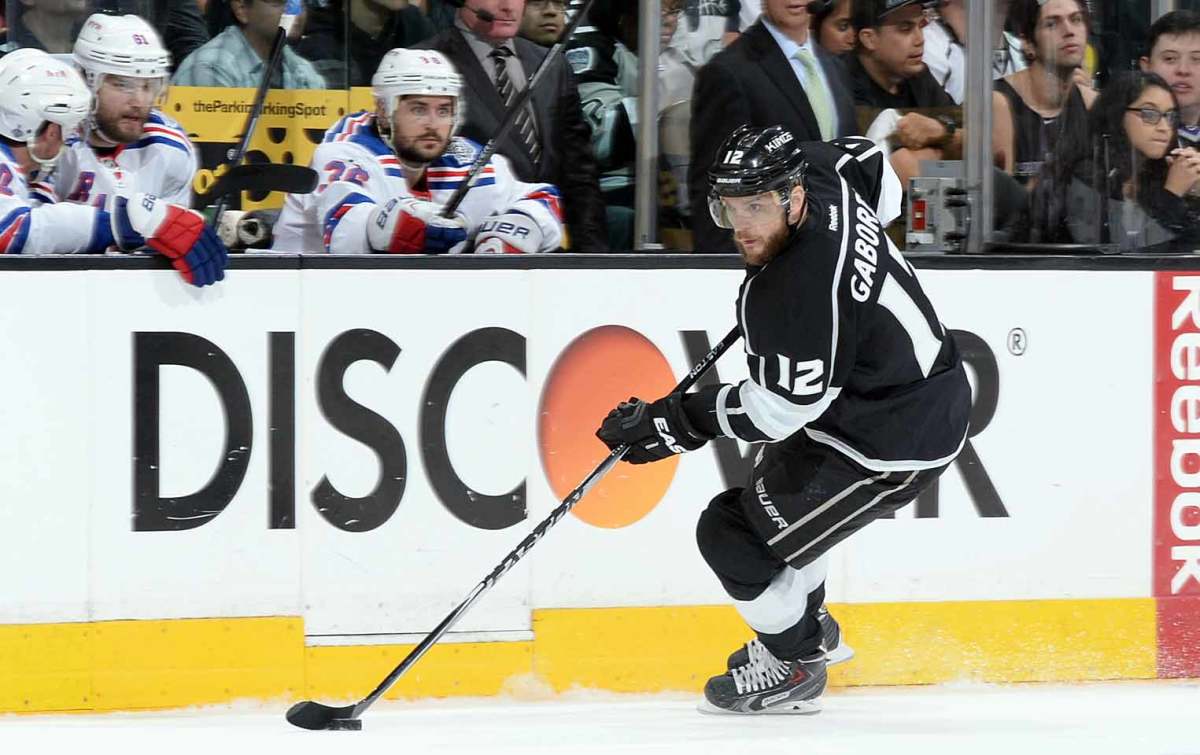
Seeking offensive punch, the Kings acquired the talented but oft-injured sniper from Columbus on March 5, 2014 for forward Matt Frattin and two draft picks. Gaborik, who had six goals and 14 points in 34 games during a regular season marred by a broken collarbone, proved to be the tonic that L.A. needed. He went on the lead the NHL in postseason goals (14), the most by a King in one playoff year since Wayne Gretzky, and became the first player ever to score a tying goal in the final 10 seconds of regulation and then win a playoff game in overtime (vs. Anaheim) as the Kings rolled to their second Stanley Cup in three years.
Martin St. Louis/Ryan Callahan
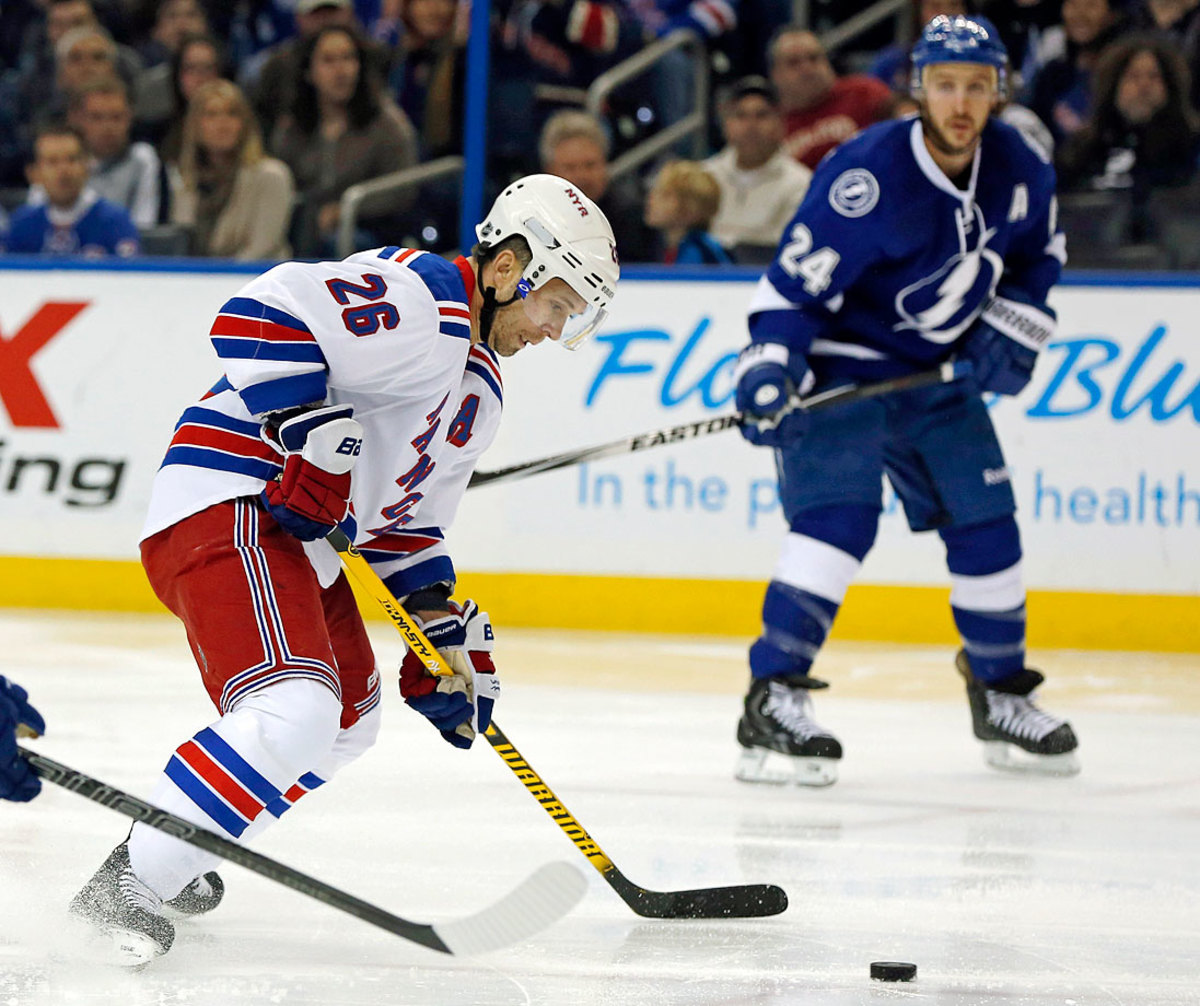
The deadline day blockbuster of 2014 was a trade of captains with the Rangers sending impending unrestricted free agent winger Ryan Callahan to the Lightning for Martin St. Louis. Tampa Bay's longtime winger and offensive force had demanded a trade to New York after he was snubbed for Canada's Olympic team by his GM Steve Yzerman. St.Louis played a key role in the Rangers' run to the Stanley Cup finals, where they fell to the Kings.
Jarome Iginla
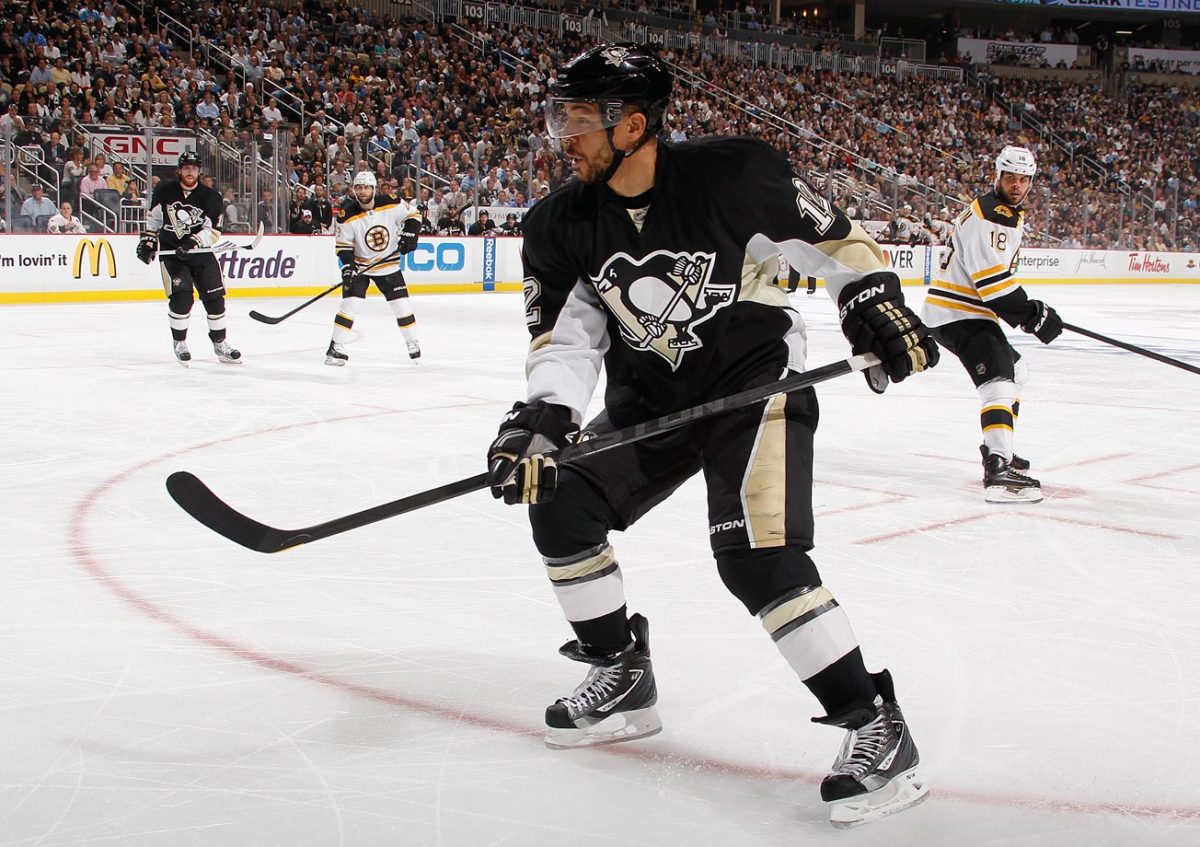
The Penguins made a splash by acquiring three veterans: forward Brenden Morrow from the Dallas Stars (for defensive prospect Joe Morrow and a 2013 fifth-round pick), defenseman Douglas Murray from the Sharks (for 2013 and '14 second-round picks) and, most notably, winger Jarome Iginla from the Flames (for two prospects and a 2013 first-rounder). The Penguins were considered heavy Cup favorites, but despite their new acquisitions they fell short in the Eastern Conference finals where they were swept by Boston. Ironically, Iginla signed with the Bruins after the season.
Jeff Carter
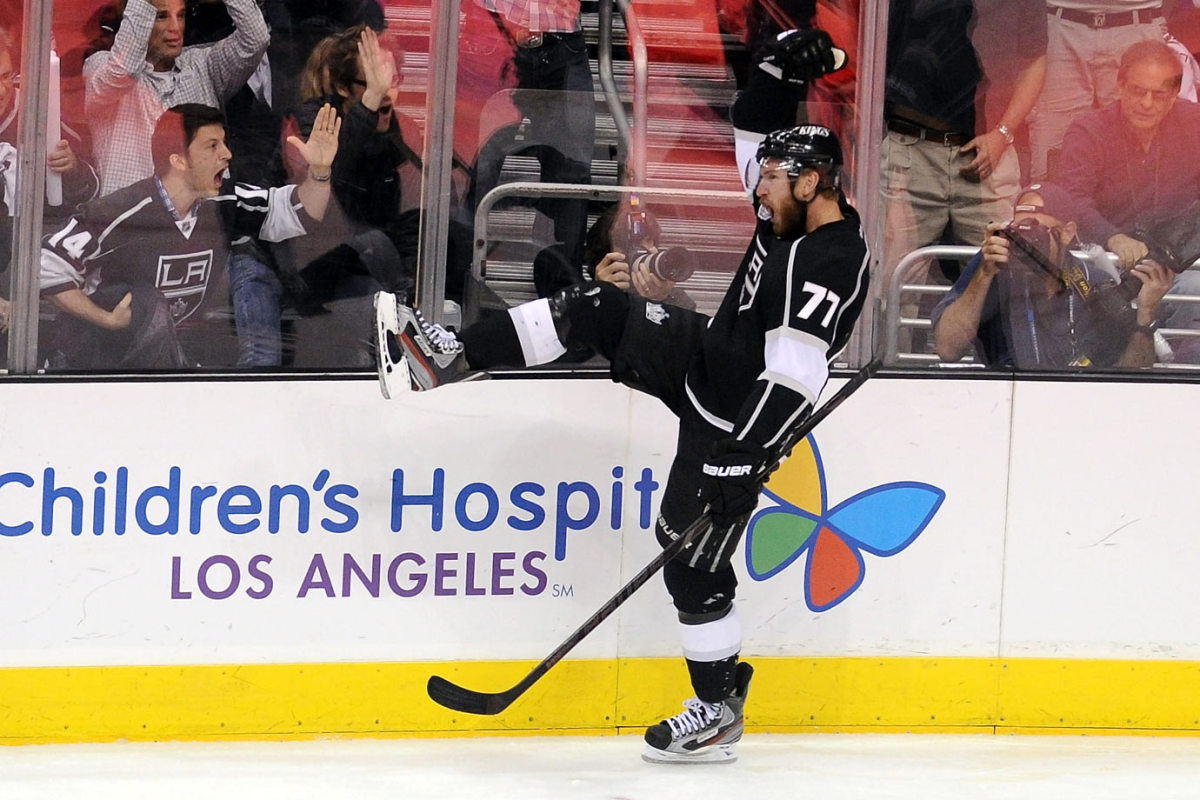
After an unproductive stint in Columbus, the 27-year-old forward was acquired by the Kings on Feb. 23 for defenseman Jack Johnson and a first-round pick in the 2013 draft. Being reunited with former Flyers teammate Mike Richards helped revive Carter's comfort level and his scoring touch—he'd been a 46-goal man in Philadelphia—and he potted 18 goals in 32 games down the stretch as the Kings rallied to grab the eighth seed in the West. In the playoffs, he proved to be a force (eight goals, 13 points in 20 games), scoring his first career postseason hat trick in Game 2 of the Western Conference Finals vs. Phoenix plus the OT winner in Game 2 of the Stanley Cup finals vs. New Jersey as well as the Cup-clincher in Game 6.
Chris Kelly
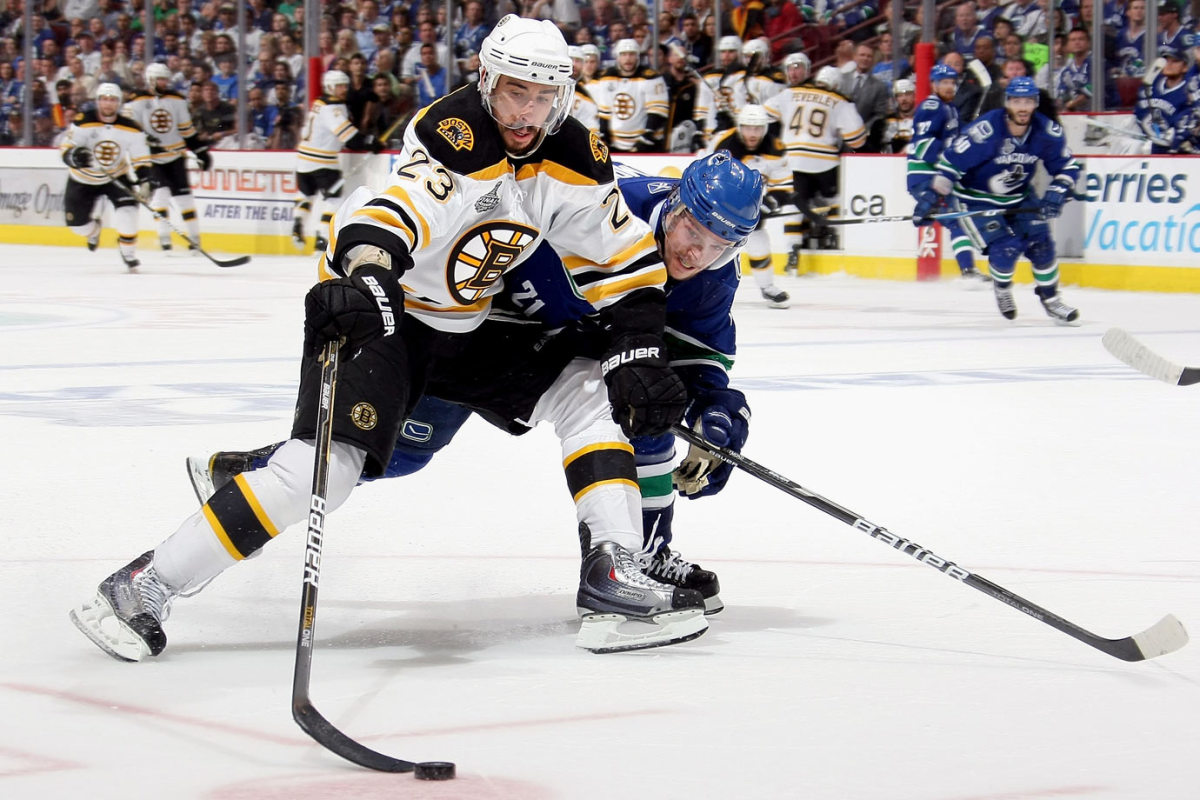
Boston's stretch drive acquisitions included defenseman Tomas Kaberle, forward Rich Peverley, and Kelly, who brought toughness, defensive reliability, and some scoring from the Senators on Feb. 15 for a 2011 second-round pick. "I've obviously had a connection with him in my time with Ottawa," Bruins GM Peter Chiarelli told NHL.com. "He's a high-character person. He plays both ways. We needed a centerman that's going to give us some depth, and Chris can give us that and he can play up and down the lineup." During the Bruins' run to the Stanley Cup, the versatile Kelly appeared in 25 games, scoring five goals and 13 points with a solid +11 rating as a valuable "glue guy" for Boston.
Marian Hossa
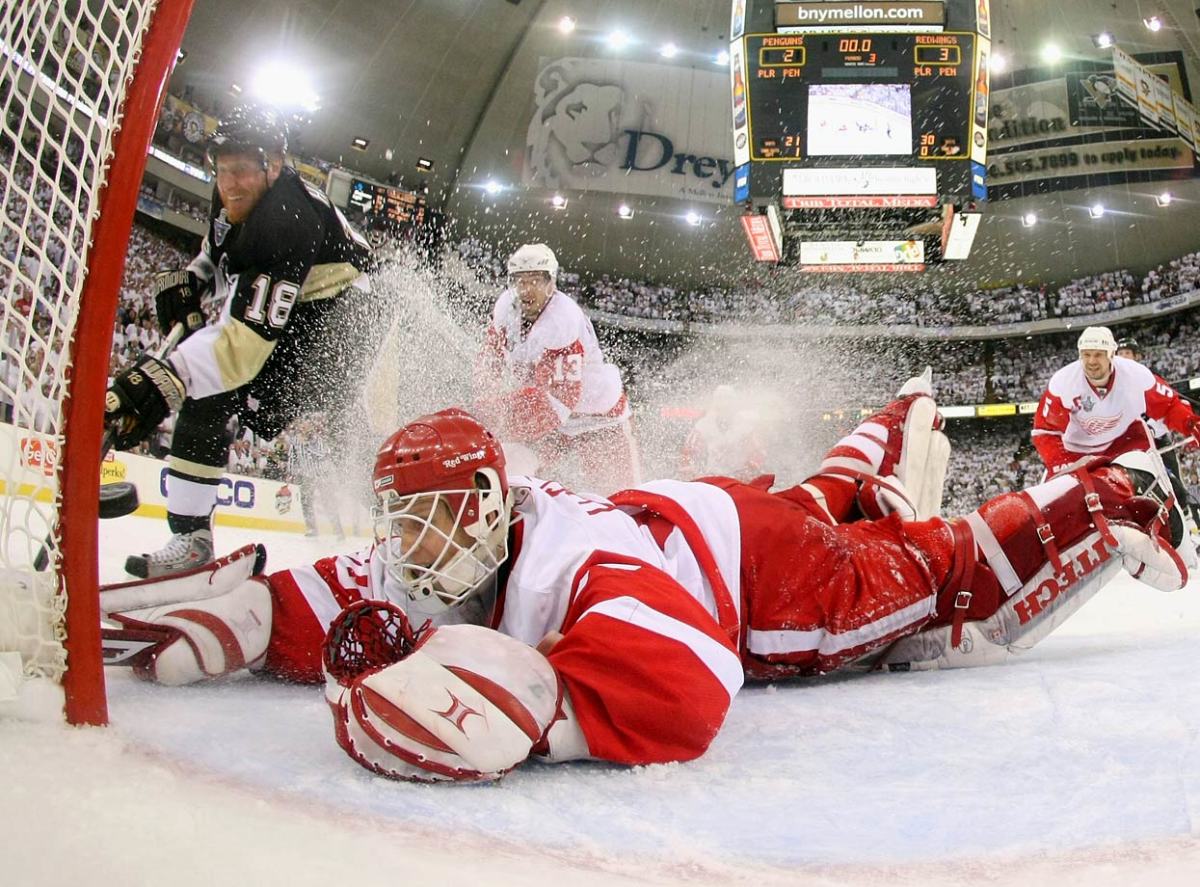
Among the significant pickups of 2008 was Pittsburgh's acquisition of sniper Marian Hossa, along with winger Pascal Dupuis, from Atlanta for winger Colby Armstrong, centers Erik Christensen and Angelo Esposito, and a 2008 first-round pick. The deal was questioned after Hossa signed with Detroit after the season, but for a little more than three months he played a vital, productive role in helping the Penguins reach the Stanley Cup finals.
Chris Kunitz
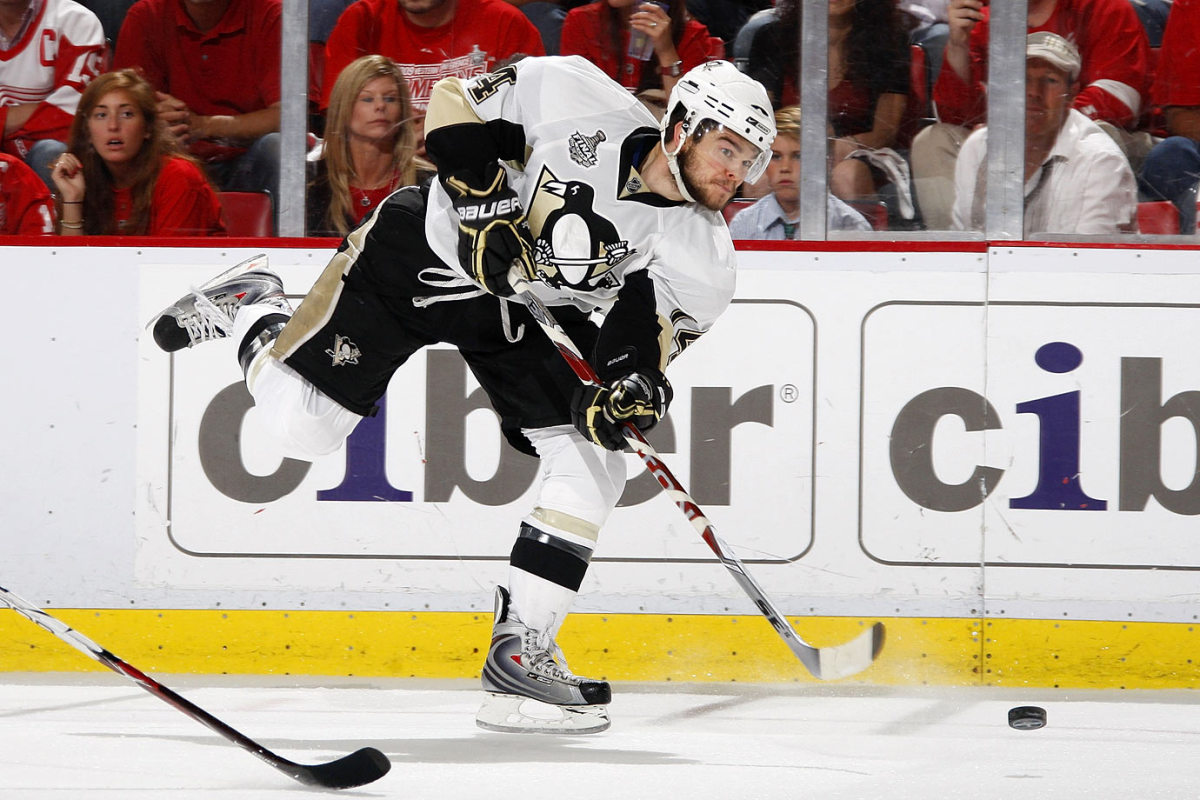
The productive winger was acquired from Anaheim with center Eric Tangradi on Feb. 26, 2009 for defenseman Ryan Whitney. A rugged forechecker with solid playmaking skills and scoring touch, Kunitz brought championship experience, having scored 25 goals for the Ducks' 2006-07 Stanley Cup championship team. He produced a goal and 13 assists in 24 playoff games during the Pens' run to the 2009 Cup and he's since proved to be a consistently valuable addition while playing on Sidney Crosby's line. Kunitz had a career year in 2011-12 (26 goals, 61 points) and followed it up by remaining in the top five of NHL scorers for much of 2013.
Mark Recchi and Doug Weight
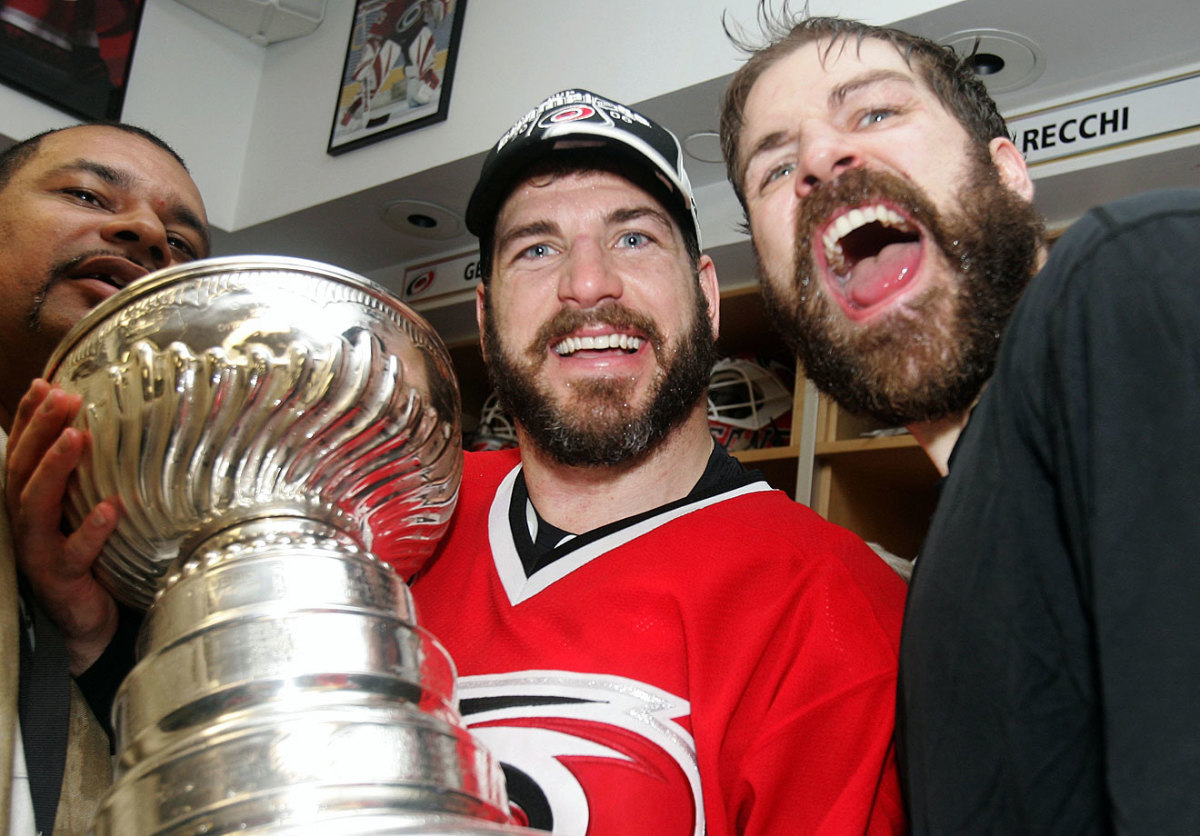
The 'Canes added Weight to their offense on Jan. 30 by giving the Blues three picks and three players, and replaced the injured Erik Cole by renting Recchi from Pittsburgh an hour before the March 9 trading deadline. Each player scored 16 postseason points as Carolina drove to its first Stanley Cup.
Dwayne Roloson
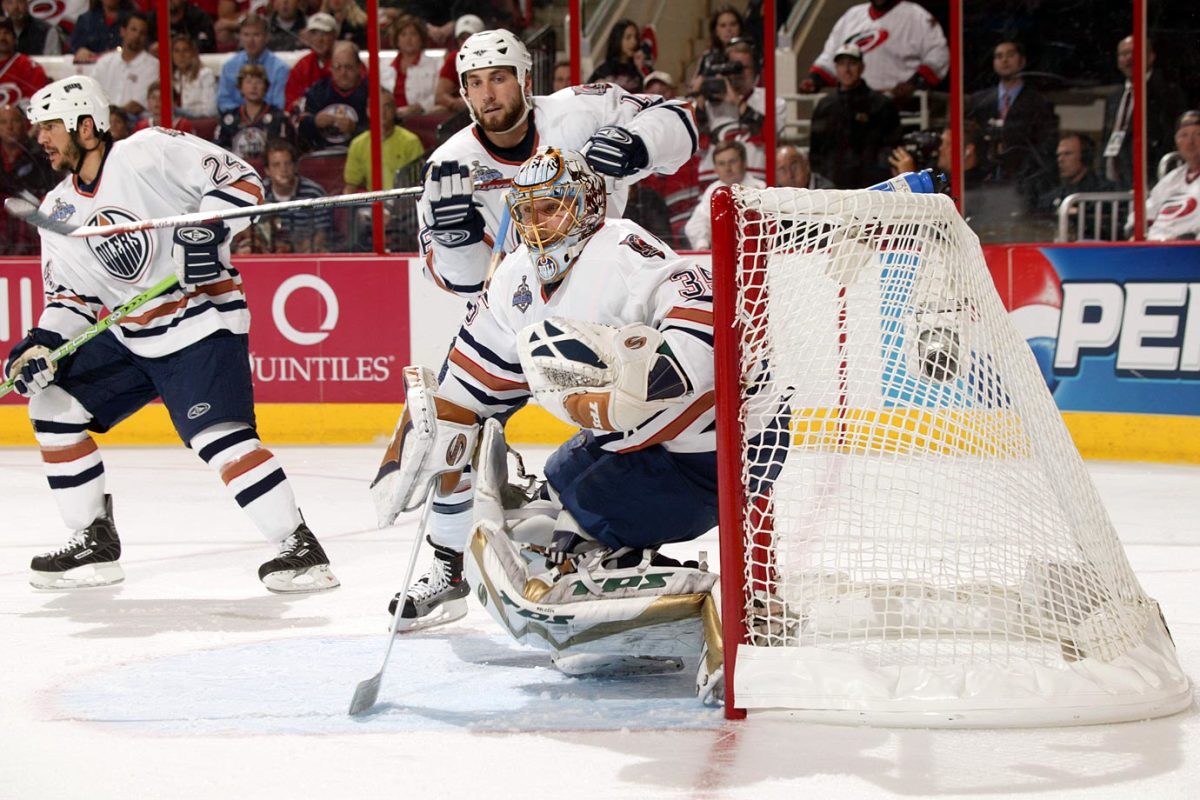
Acquiring the journeyman goaltender from the Wild on March 8 for a first-round pick proved to be a surprisingly successful move. Roloson went 8-7, 2.43 GAA down the stretch and backstopped the upstart Oilers to the Cup finals before being sidelined with a sprained knee in Game 1.
Steve Thomas and Rob Niedermayer
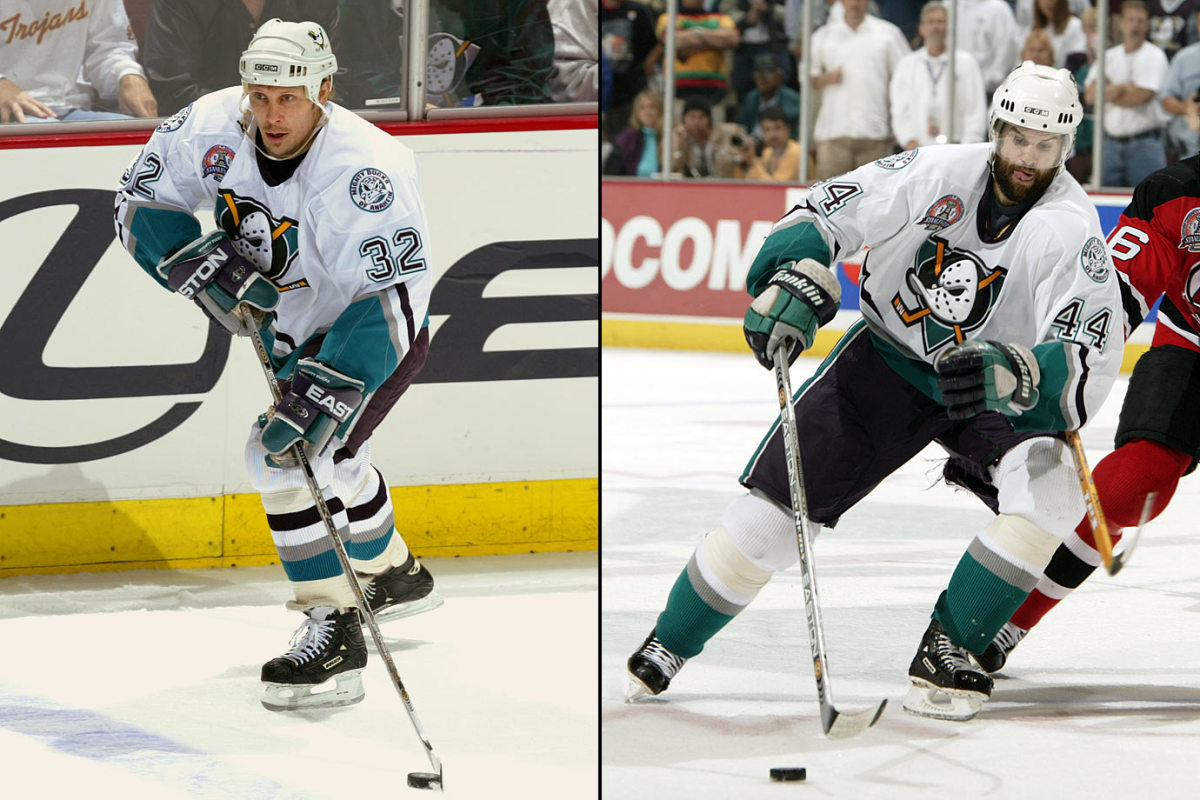
Thomas, a speedy, hard-working winger with scoring touch, had made deep playoff runs with the Islanders ('93) and Maple Leafs ('86, '99). He was acquired from Chicago on March 11, the day the big, fast Niedermayer, a veteran of Florida's surprising run to the '96 Cup finals, arrived. The pair helped propel the surprising Ducks to a seven-game Cup finals loss to the Devils.
Ray Bourque
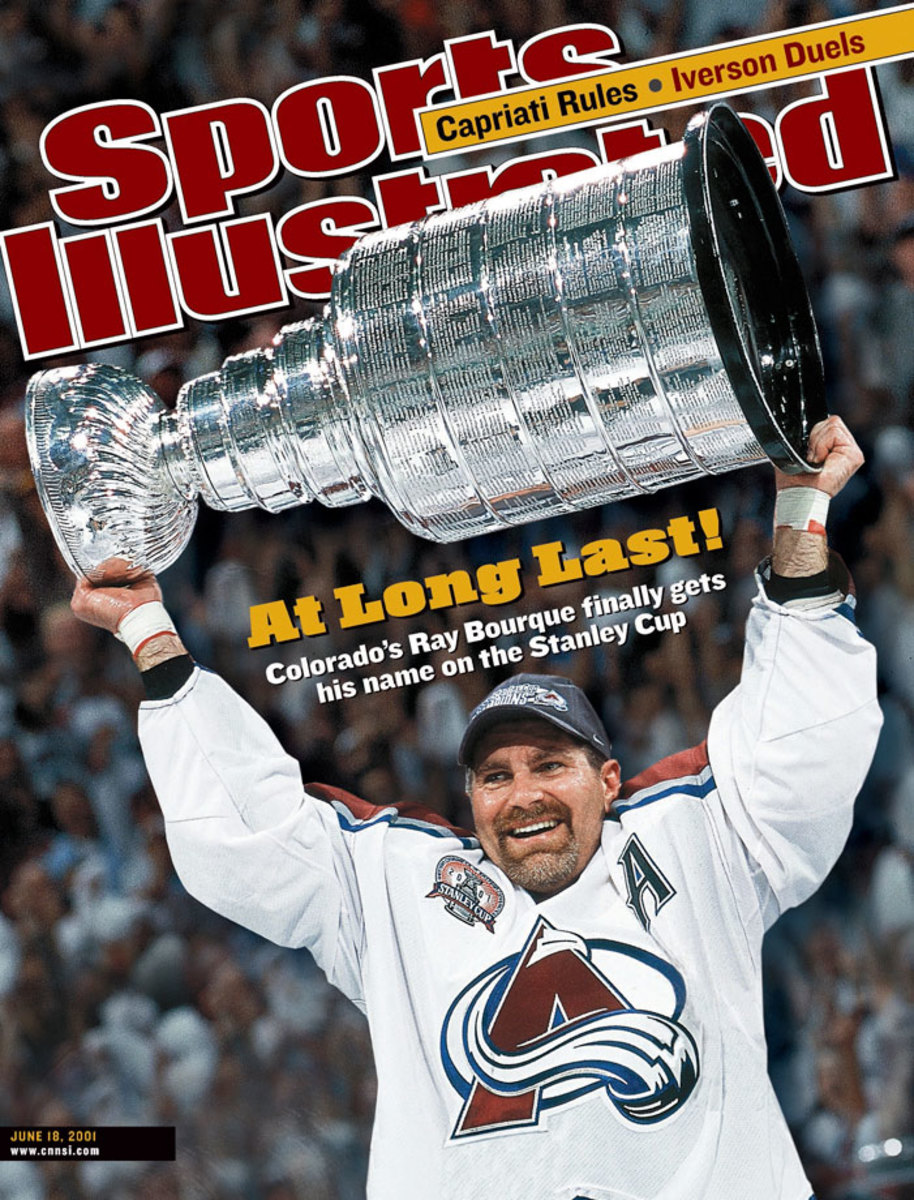
Boston's iconic, high-scoring backliner was dealt to Colorado at the deadline, hoping to finally win the Cup. The Avs fell in the Western Conference final, but Bourque ultimately sipped from the chalice in 2001—his 22nd and final season—after contributing 10 points in 21 postseason games.
Mike Keane
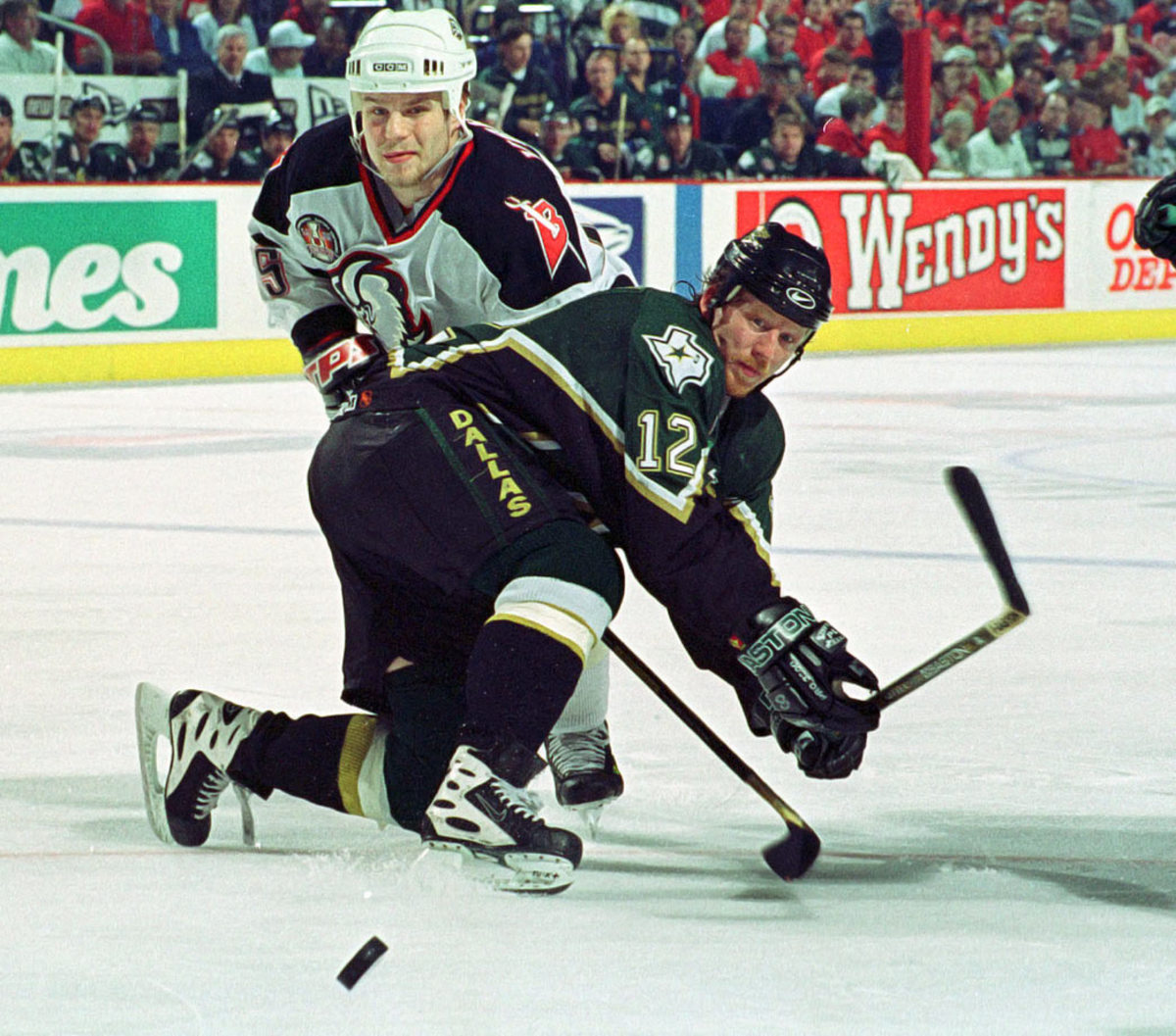
The hardworking winger was a key part of Montreal's '93 Cup champs, and later donned the Habs' C, before he was traded with Patrick Roy to Colorado during the Avs' 1995-96 Cup season. The Stars acquired him from the Rangers before the '98 deadline. A year later, Keane gave Dallas a dose of indispensable grit during the Stars' Cup run in '99.
Larry Murphy
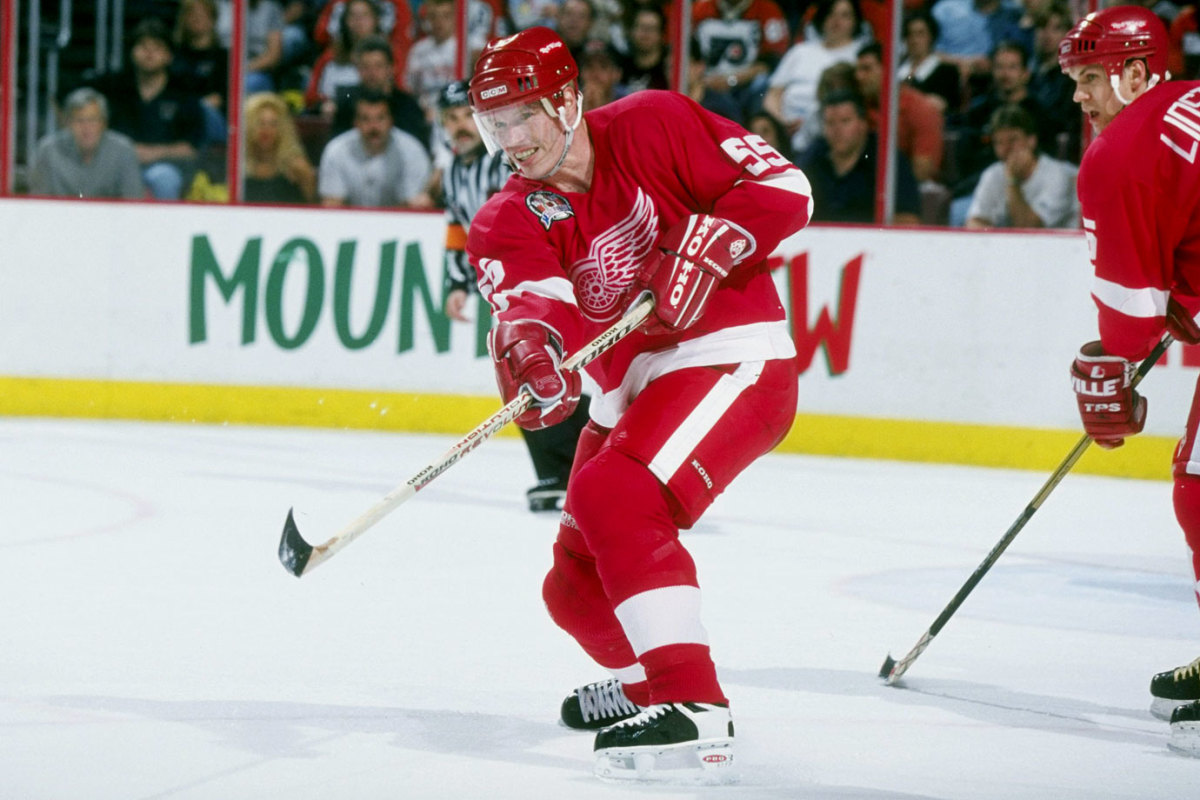
The offensively gifted veteran, who won two Cups with Pittsburgh, was acquired from Toronto on March 18. The Wings went on to win the Cup, the first of their two consecutive championships with the future Hall of Famer on the backline.
Ray Sheppard
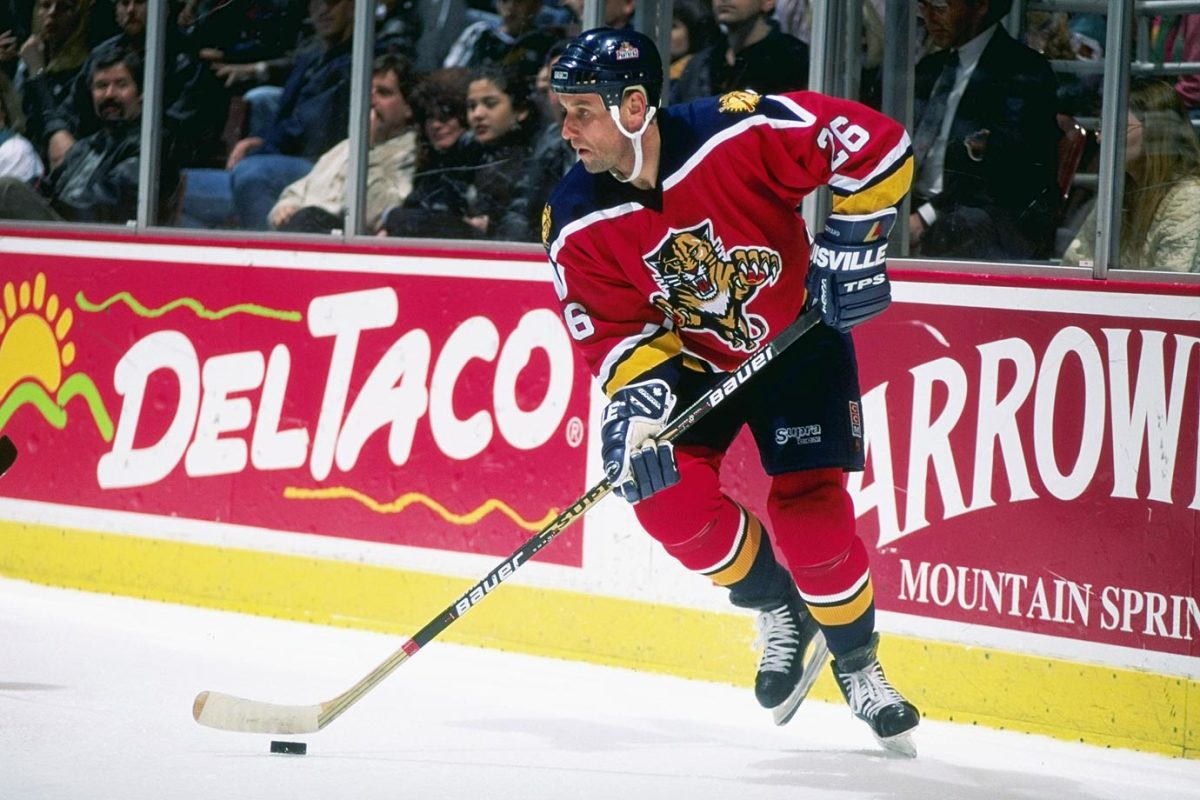
Poor skating didn't prevent Sheppard from scoring 52 goals for Detroit in 1993-94, and his scrappy skill sparked Florida's surprising run to the '96 Cup finals after he was acquired from San Jose on March 16. Sheppard scored eight goals and 16 points in Florida's 21 postseason games.
Slava Fetisov
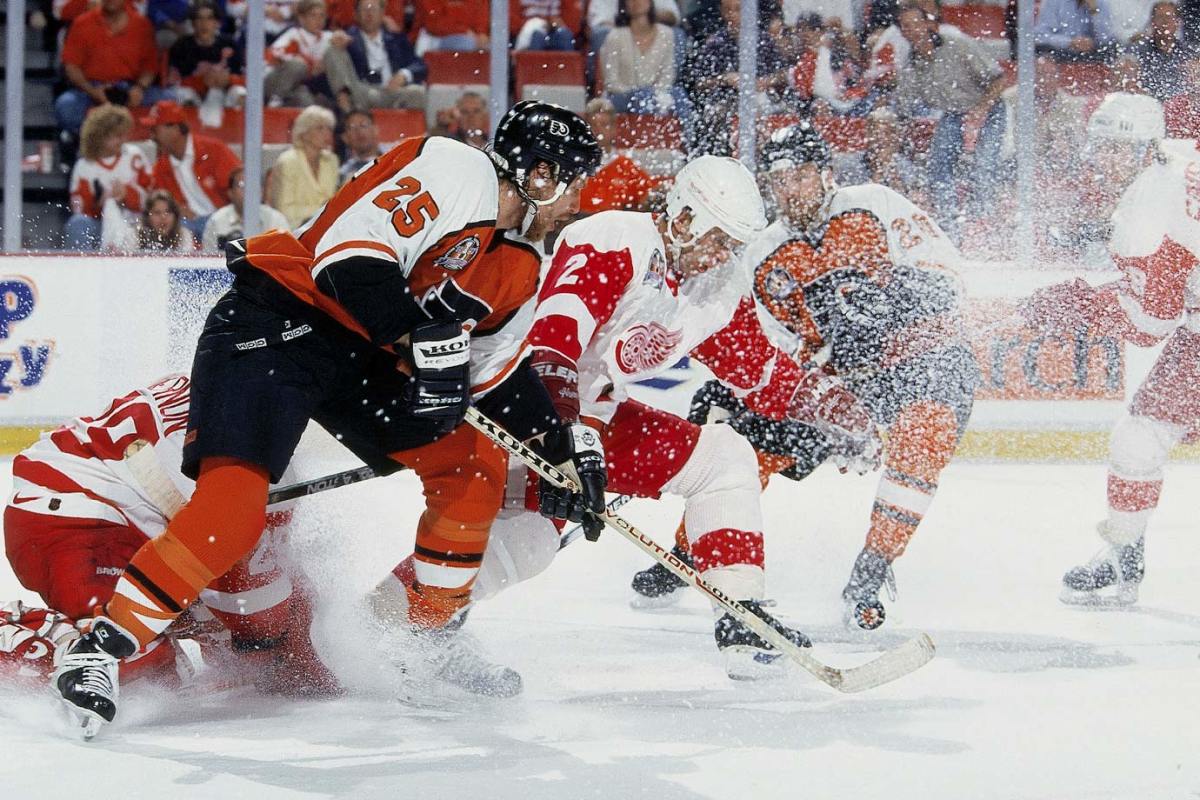
The legendary Russian defenseman was dealt by the Devils on April 3, 1995. In Detroit, he replaced the injured Mark Howe and the Wings soared to the Cup finals where they were swept by Fetisov's former team. But Fetisov later skated for Detroit's 1997 and '98 Cup-winners.
Brad Richards
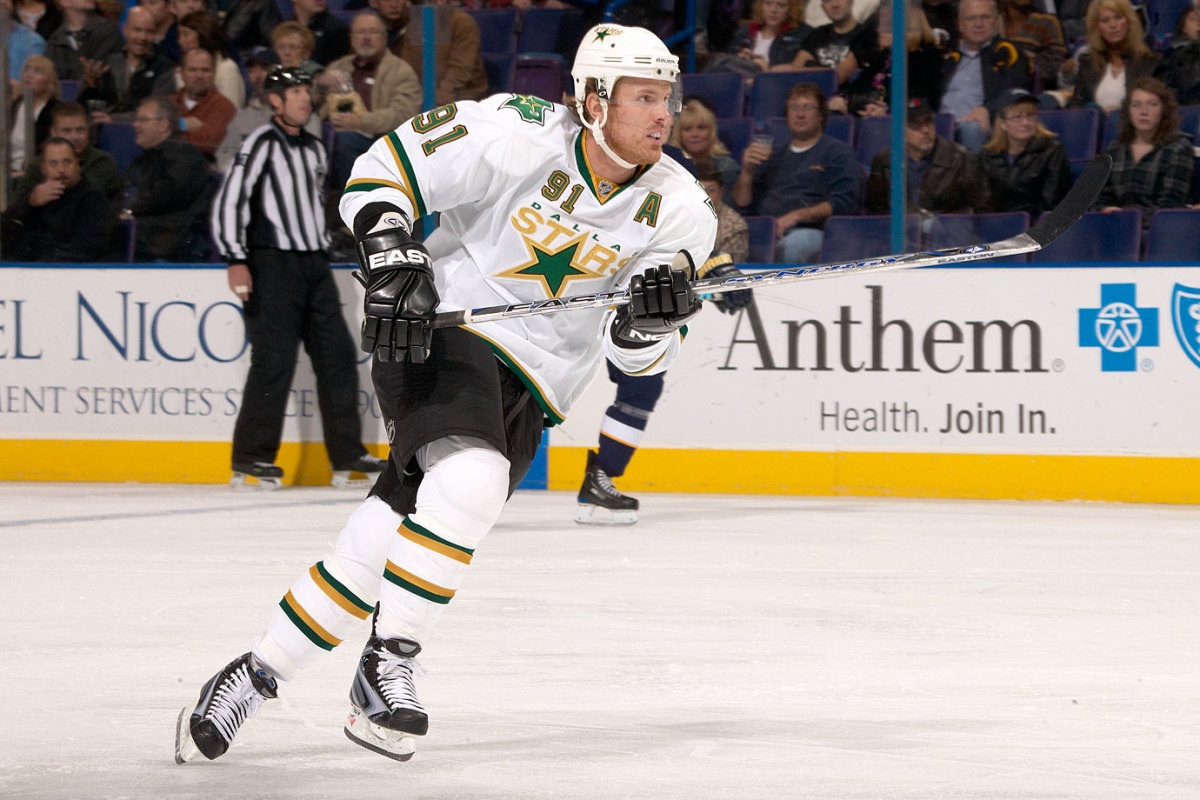
Richards brought a playmaking spark from Tampa Bay in a deal that included backup goaltender Johan Holmqvist for Stars netminder Mike Smith, center Jeff Halpern, winger Jussi Jokinen and a fourth-round pick in 2009. He immediately caught fire in Dallas, scoring 11 points (two goals, nine assists) in 12 games down the stretch and another 15 in the playoffs as the Stars became a spring surprise by reaching the Western Conference finals.
Martin Gelinas
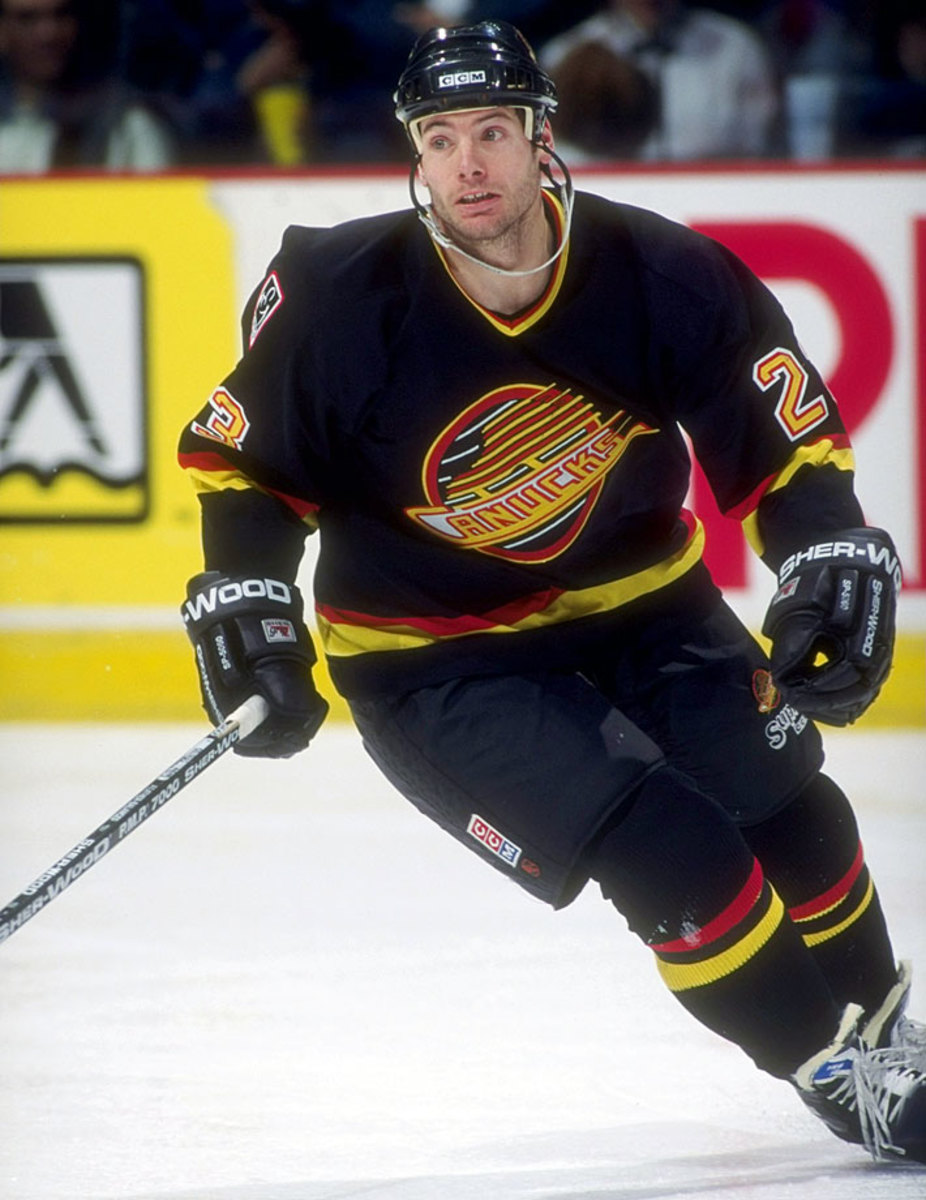
A member of Edmonton's 1990 Cup champs, Gelinas was plucked off waivers from Quebec on Jan. 15 and began a string of remarkable postseason performances. The winger helped the Canucks reach the Cup finals against the Rangers and later scored huge postseason goals for Cup finalists Carolina (2000) and Calgary (2004).
Ron Francis and Ulf Samuelsson
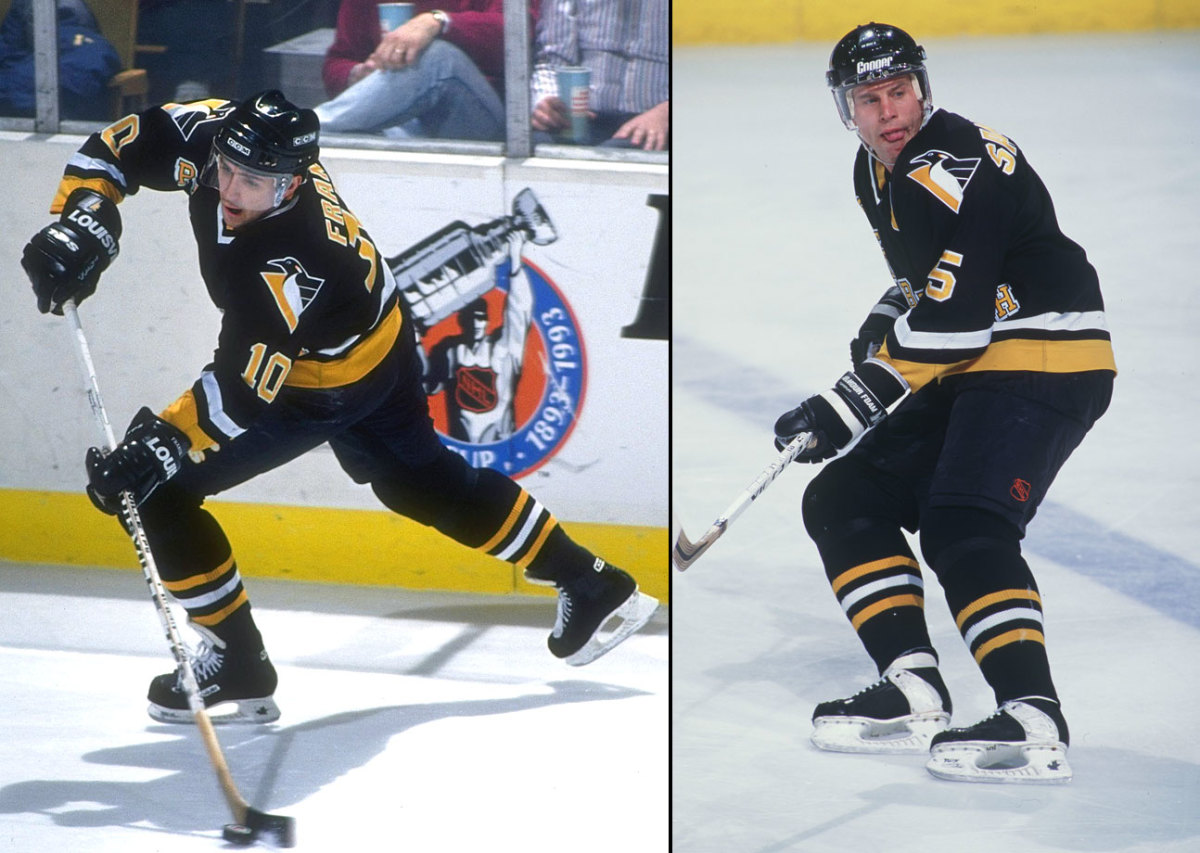
Pittsburgh's run of two successive Cups began after Francis arrived from Hartford on March 4, 1991. One of the best two-way forwards, he scored 17 points in the playoffs and became a Pens' mainstay for seven seasons. Feared blueliner Samuelsson, acquired with Francis, added bruising physicality.
Andy Moog
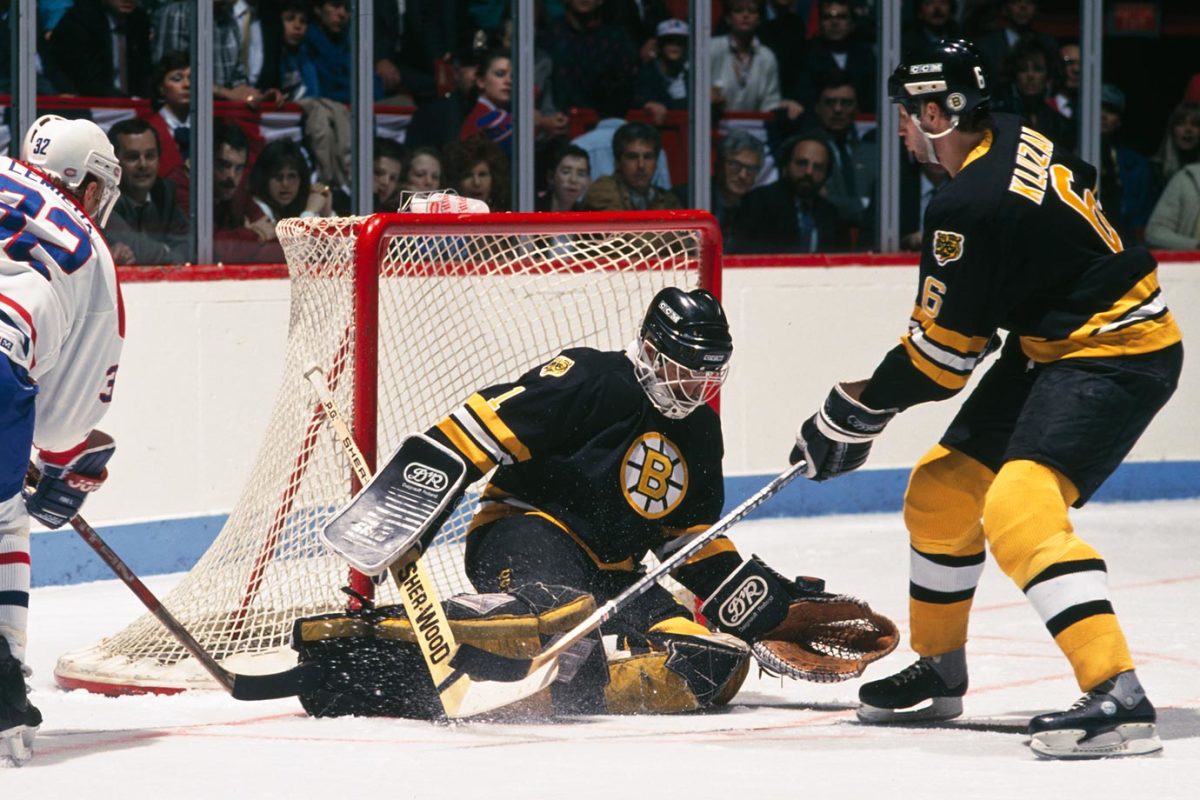
A veteran of three Cups in Edmonton, the disgruntled Moog was dealt to Boston on March 8, 1988, pairing with Reggie Lemelin to send the Bruins to the finals. The deal also benefited the Oilers, who received goalie Bill Ranford, the starter on their 1989-90 team that beat Moog's B's in the Cup finals.
Joe Mullen
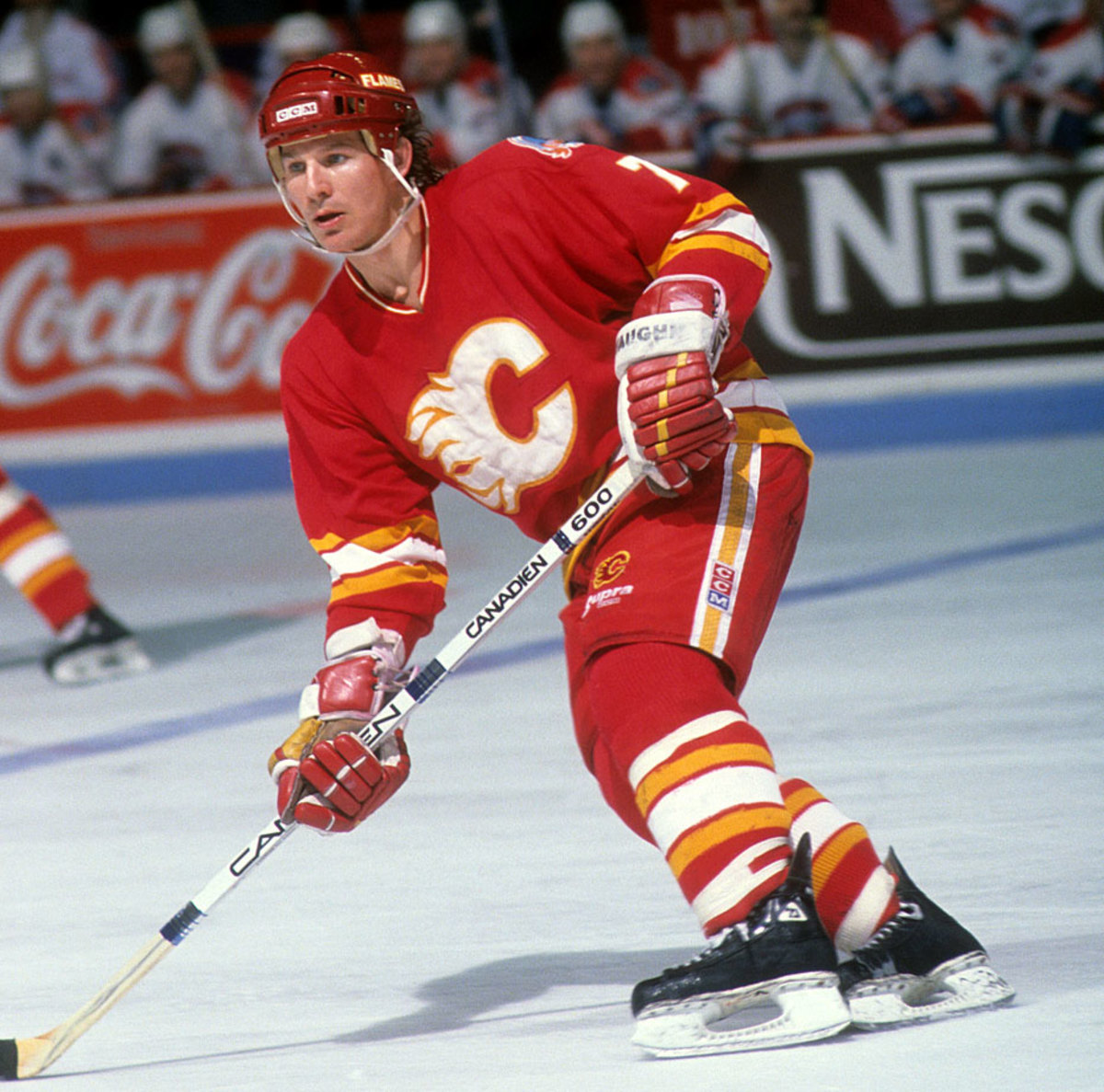
The Hall of Fame forward arrived from St. Louis in a six-player deal on Feb. 1, 1986, bringing toughness, scoring and superb two-way play. He scored 29 goals down the stretch and another 12 in the playoffs as the Flames reached the Cup finals, only to fall to Montreal.
Butch Goring
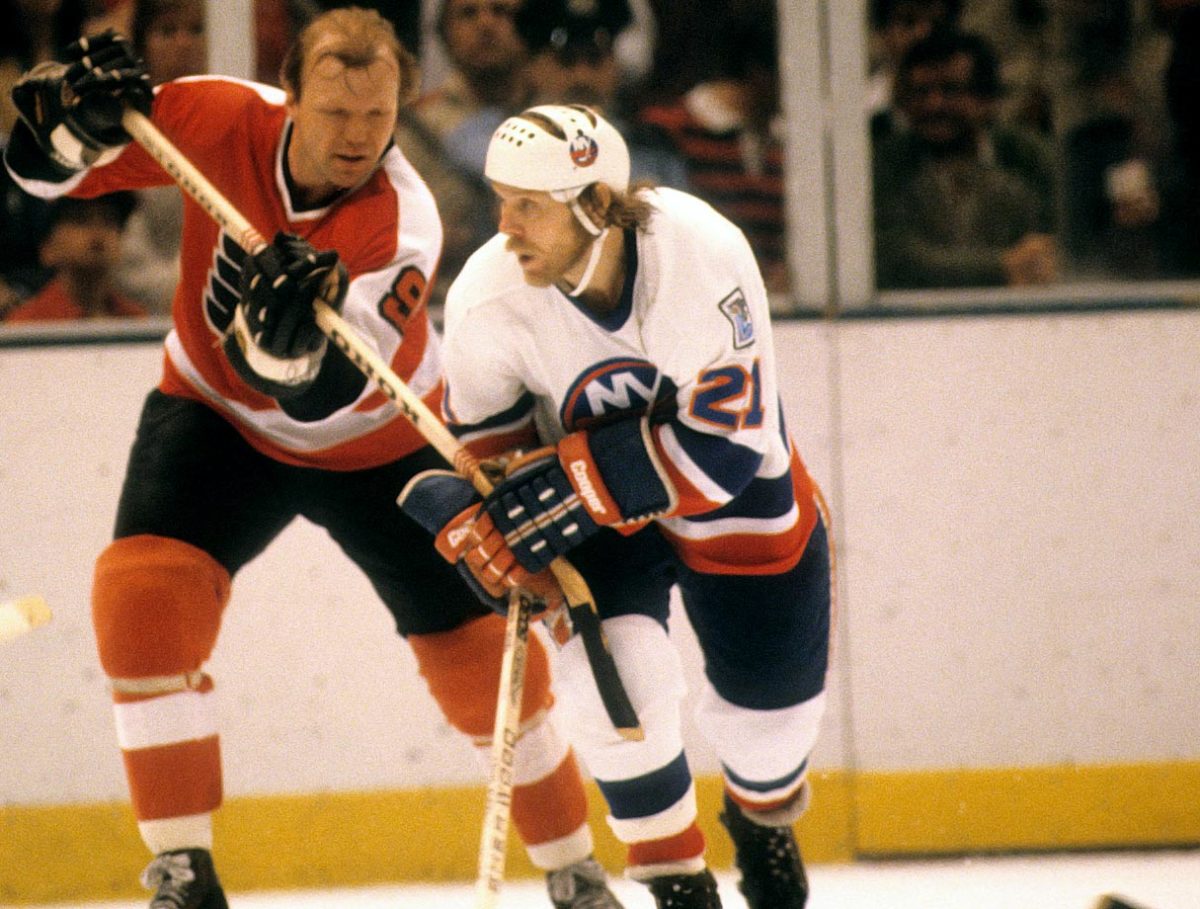
The final piece that launched the Isles' dynasty arrived at midnight before the 1980 deadline. Goring brought crucial leadership, experience, durability, face-off skills and additional scoring from the Kings in exchange for Dave Lewis and Billy Harris. The Isles went on to win the first of their four straight Cups. Goring won the Conn Smythe Trophy in 1981.
